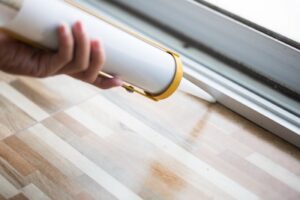Sustainable Home Renovations: How to Make Your House More Eco-Friendly
Welcome to the world of sustainable home renovations! If you’re reading this, chances are you’re already interested in making your home more eco-friendly. Congratulations! You’re taking the first step towards a more sustainable future, and we’re here to help guide you through the process. So, how can you make your house more eco-friendly with sustainable home renovations?
There are various sustainable home renovations to make your house more eco-friendly. One way to be more energy efficient by sealing air leaks in doors and windows, conserving water by using low-flow faucets, and by recycling materials in your home and composting.
By implementing these changes, you will reduce your impact on the atmosphere, save on your energy bills, and create a healthier living space for you and your family. So, let’s dive in and understand how to make your home more sustainable!
But why is it so important to make your home more sustainable? According to recent United States Environmental Protection Agency (EPA) statistics, the residential sector is responsible for approximately 20% of the country’s greenhouse gas emissions. That means that our homes significantly impact the environment and contribute to climate change.
But there’s good news – by making simple changes to your home, you can reduce your carbon footprint and help to create a more sustainable future for our planet. This article will explore various ways to make your home more eco-friendly, from energy-efficient upgrades to sustainable materials and recycling programs.

Evaluating Your Home’s Current Environmental Impact
The first step towards creating a more eco-friendly home is evaluating your home’s current environmental impact. Here are some things to consider:
- Start by assessing your energy usage. How much energy do you use each month, and where is it used? This information can usually be found on your utility bills or through an online account.
- Look for areas of waste and inefficiency. Are there appliances that are using more energy than they need to? Are there air leaks causing your home to lose heat or cool air?
- Analyze the sources of carbon emissions. Where is the majority of your carbon footprint coming from? Is it from your energy usage, transportation, or something else?
Doing this lets you identify areas to improve and reduce your carbon footprint.
Energy-Efficient Improvements
1. Upgrading to Energy-Efficient Appliances and Fixtures
One way to reduce your home’s energy usage is by upgrading to energy-efficient appliances and fixtures. This includes LED light bulbs, smart thermostats, and Energy Star-certified refrigerators.
Another appliance that can make a big difference is an eco-friendly ac window unit, designed to use less energy while keeping your home cool. Interestingly, they come in compact designs that can add a touch of classiness to your space. Also, you can find intelligent ac units that can be controlled via remote access and have air-purification features. All of these make them an essential investment if you want to add sustainable items to your renovation plan.
By upgrading to energy-efficient appliances and fixtures, you’ll save money on your energy bills and be doing your part to protect the environment.
2. Installing Solar Panels and Other Renewable Power Sources
Another way to make your home more eco-friendly is by installing solar panels or other renewable energy sources. Solar panels use the sun’s power to generate electricity for your home. At the same time, other renewable energy sources like wind or geothermal can also be used to produce clean energy.
By generating electricity, you’ll reduce your reliance on fossil fuels and decrease your carbon footprint. Plus, many states offer incentives and tax credits for homeowners who install solar panels or other renewable energy sources, making it an even more affordable option for those looking to go green. You can also compare electric providers using renewable energy to get the best deals as they are more likely to offer the lowest energy rates.
3. Improving Insulation and Sealing Air Leaks
One of the most comfortable and effective ways to make your home more energy-efficient is by improving insulation and sealing air leaks. Common areas of air leaks include windows, doors, and attics.
These leaks can cause your home to lose warmth in the winter and cool air in the summer, leading to higher energy bills. Boosting insulation and shutting air leaks will lessen your energy usage and save money. It’s a manageable and cost-effective way to make your home more eco-friendly while improving comfort.

Water Conservation Strategies
1. Upgrading to Low-Flow Faucets and Showerheads
Upgrading to low-flow faucets and showerheads is an easy and powerful way to reduce water usage while making the home more eco-friendly. These fixtures are designed to use less water without sacrificing performance, which can significantly save your water bills.
Plus, using less water means that you’ll be conserving this precious resource and helping to protect the environment. So if you’re looking for an easy way to go green, upgrading to low-flow faucets and showerheads is a great place to start.
2. Installing Rain Barrels and Greywater Systems
Installing rain barrels and greywater systems are great ways to conserve water and make your home more eco-friendly. Rain barrels collect rainwater that can be used for watering your plants or lawn.
On the other hand, greywater systems collect and reuse water from sinks, showers, and washing machines for non-potable purposes. Using these systems can significantly reduce your water usage and save money. In addition, you can also do your part to protect the environment.
3. Implementing Landscaping Techniques to Reduce Water Usage
Implementing landscaping techniques to reduce water usage is an excellent method to make your home more environmentally conscious. These techniques can include choosing drought-resistant plants, grouping plants with similar water needs, and using mulch to retain moisture in the soil.
By reducing your outdoor water usage, you’ll conserve water and protect the environment. It’s a simple and effective way to go green and make a positive impact.
Waste Reduction and Recycling
1. Sustainable Material and Design
Sustainable materials and design are important considerations for making your home more eco-friendly. Some key points to keep in mind include the following:
- Choosing materials that are renewable, recycled, or locally sourced
- Using energy-efficient building practices and materials
- Maximizing natural light and ventilation to reduce energy usage
- Including green roofs or living walls to enhance air quality
- Investing in high-quality, durable materials that will last longer and require less maintenance
2. Composting Organic Waste
Composting organic waste is a great way to make your home more eco-friendly and reduce your waste. To start composting, you must use composting materials like food scraps and yard waste will create a nutrient-rich soil amendment that can be used in your garden or landscaping.
This process reduces the amount of waste sent to landfills and provides a sustainable way to nourish your plants.

3. Reducing Waste Through Conscious Consumption
Reducing waste through conscious consumption is crucial to turning your home into an ecologically friendly space. This can involve making intentional choices about the products you buy, such as choosing products with minimal packaging or opting for reusable products instead of disposable ones.
One of the main positive impacts of reducing waste is decreasing the environmental carbon footprint. Also, you get to save many bucks, be it while shopping or getting things repaired. It’s an efficacious method to protect the planet.
4. Implementing a Recycling Program
Implementing a recycling program is another excellent way for homeowners looking to make their homes sustainable. By recycling materials like paper, plastic, and glass, you’ll reduce the amount of waste in landfills and conserve natural resources.
To implement a recycling program, set up designated bins for recyclables, research what materials can be recycled in your area, and educate yourself and your family on the importance of recycling. It’s a small but impactful change that can make a big difference in saving the environment.
Bottom Line
Sustainable home renovations are a great way to lessen your environmental influence and create a more comfortable and cost-effective living space. By implementing these eco-friendly strategies, you’ll save money on your bills and do your part to protect the planet for future generations. So start making changes today and enjoy the benefits of a more sustainable home!
